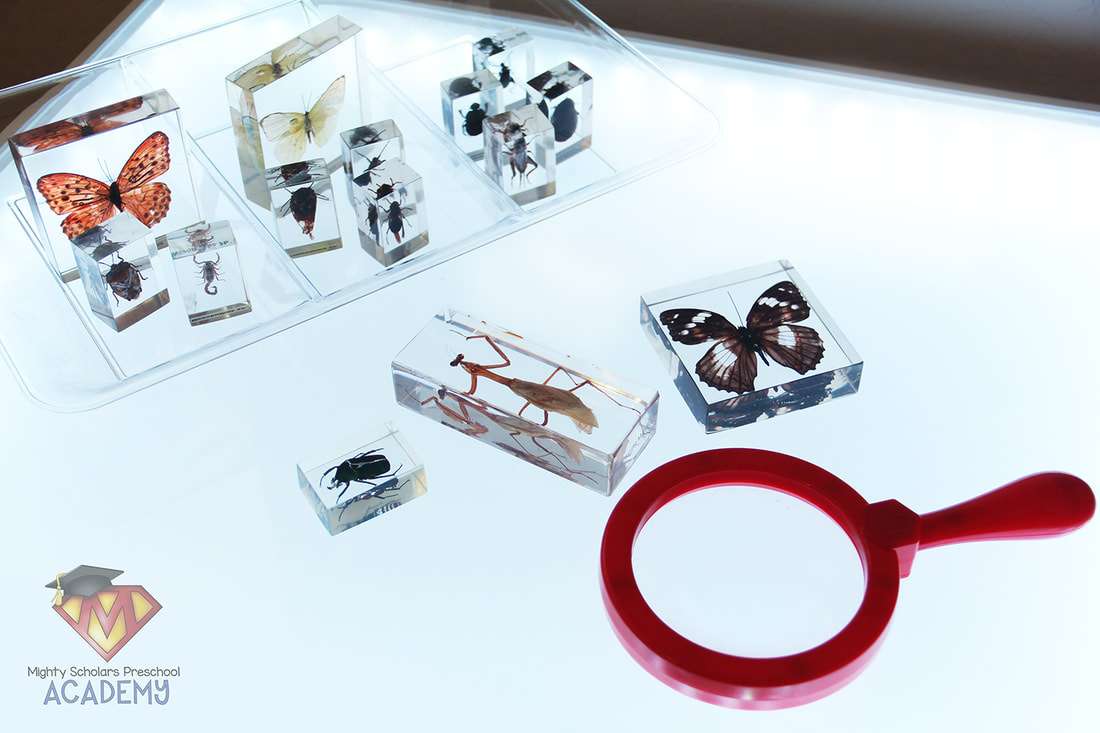|
The light table can make close observation an incredible experience.
During our Spring Life Cycles Unit, I like to expose my scholars to real creatures, where I'm able. The light table can be a valuable tool with exploration by providing preserved specimens for very close observation. Some of my favorite specimens are those I've preserved from my own collection and purchased separately online.
Educational specimens come in a wide range for cost and quality.
As a teacher on a budget, I have opted for the cheaper basic collections in the past. Many of those collections have lasted several years, but are limited in species. I've slowly added individual specimen pieces to my classroom collections, with species from the categories I cover thoroughly in my science units. Something I have learned over time is that the most expensive will scratch just as easily as the cheaper specimens. It's important to model how you want the specimens treated, several times during the time period they're out for light table use.
Be adventurous in making your own.
I've enjoyed the challenge in making my own acrylic resin encased specimens. There are several online sites for unmounted, deceased bugs, that work perfectly for classroom specimens. However, they can become costly with purchase minimums and shipping costs. I have an extensive entomology collection for teaching that I choose specimens from and students have also donated deceased specimens that they've found.
You'll need to rehydrate deceased specimens carefully, pin them the way you'd like them to dry and make sure they are dried very thoroughly before encasing in acrylic resin. I allow my specimens to dry for a minimum of a month, before encasing them. It's important to make yourself informed on the various processes of encasing specimens on acrylic resin, before starting. There are plenty of videos available online. As a word of advice, any specimen you work with should be sprayed with a few coats of resin spray before encasing. Once the resin spray has thoroughly cured, much of the visual qualities and characteristics of the specimens will remain intact during encasing. Even with spraying though, there are several species that have characteristics that change when wet and these usually become permanent. The changes are most prominent with wings or iridescence. It's suggested that you practice with some small pieces first, to get the hang of the process before moving onto your cherished specimens.
Please note, as a participant in the Amazon Services LLC Associates Program, I may earn a small commission on qualified recommended links.
The Amazon Services LLC Associates Program is an affiliate advertising program designed to provide a means for sites to earn advertising fees by advertising and linking to Amazon.com.
My Amazon Picks for Arthropods and Insects on the Light Table are:
Comments are closed.
|
Categories
All
©2012–2024 Mighty Scholars Preschool Academy
|





